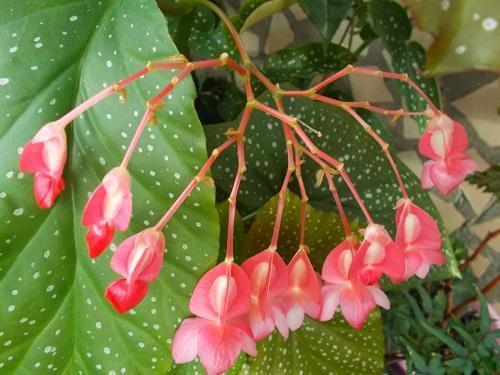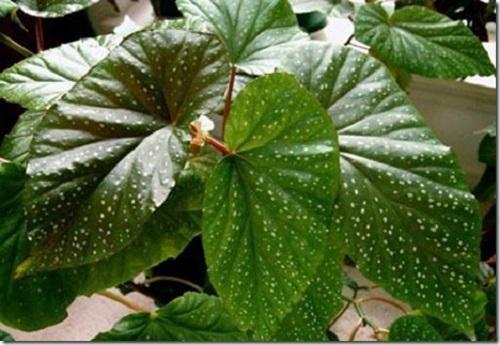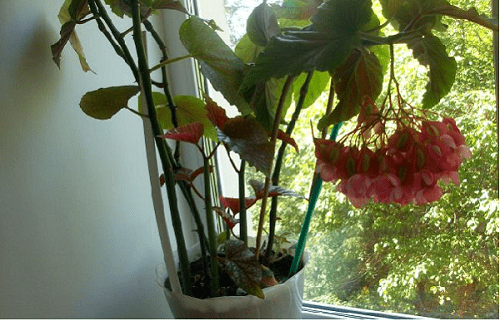Why doesn't the begonia of Lucerne bloom?
Begonia Alfalfa is an ornamental deciduous begonia, therefore the main "value" and decoration of the plant are its leaves. They are quite large, beautiful deep green with a sheen, red from the inside.

With proper care, Lucerne begonia will delight its owners not only with lush foliage, but also with unusually beautiful flowers - pink and rather large.
It is worth noting that after the flowers fade, fruits are formed on the begonias, which (after ripening) can be used to propagate the plant.
This type of ornamental plants is able to bloom from late winter to early summer. And if Alfalfa begonia does not bloom, the reasons may be hidden in improper care.

In order for this variety of begonias to decorate the windowsill with gorgeous flowers, you need to pay attention to the following points:
• what kind of lighting in the location of the pot;
• what is the temperature in the room where the flowerpot is located;
• what the flower is fed with;
• how long ago the pruning and transplanting took place.
Insufficient lighting

Since begonias are light-loving plants, lack of light also affects the frequency of flowering. The window sill on which the pot with begonia stands should be well lit, but not with direct rays - they will burn the plant from them. An ideal place would be east or west windows.
Having once chosen a "place of residence" for a pot, there is no need to rearrange it often - the flower does not tolerate changes well.
Low temperature
Begonia Alfalfa is a heat-loving flower. The comfortable temperature for her, at which the buds are laid, is at least 18 degrees in winter. In summer, it is better to maintain the temperature regime no higher than 20 degrees Celsius. A violation of the temperature regime can lead to a refusal to bloom.
Incorrect feeding
One of the reasons for the lack of flowering in Alfalfa begonias may be an excess of nitrogen fertilizers. All indoor plants are periodically fed. In this case, the type of fertilizer depends on the specific type of plant. To form a lush green mass, decorative deciduous plants are usually fed nitrogen fertilizersfrom which leaves grow.

In order for the begonia of Alfalfa to throw out inflorescences, it needs to be pushed towards this - to feed it with a complex fertilizer for flowering plants once every two weeks.
Skipped bush pruning / replanting

Begonia blooms on young shoots, so flowering may stop if it is not regularly cut (except for tuberous varieties). So that the plant does not stretch out and the leaves are not crushed, it must be formed in time.
To do this, cut off the top of a young flower (about 7 cm high). New shoots are also pinched as soon as they grow up to 10 cm.
In the case when it is necessary to revive an old plant, to awaken the dormant buds, remove the upper bud and remove the lower leaves. If this does not help, you need to cut off the tops for transplanting into separate pots for growing a new bush.
As the flower grows, it is advisable to transplant the begonia into new soil and a larger pot every two years.